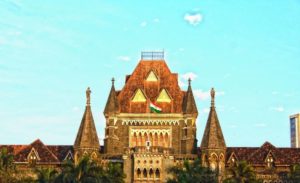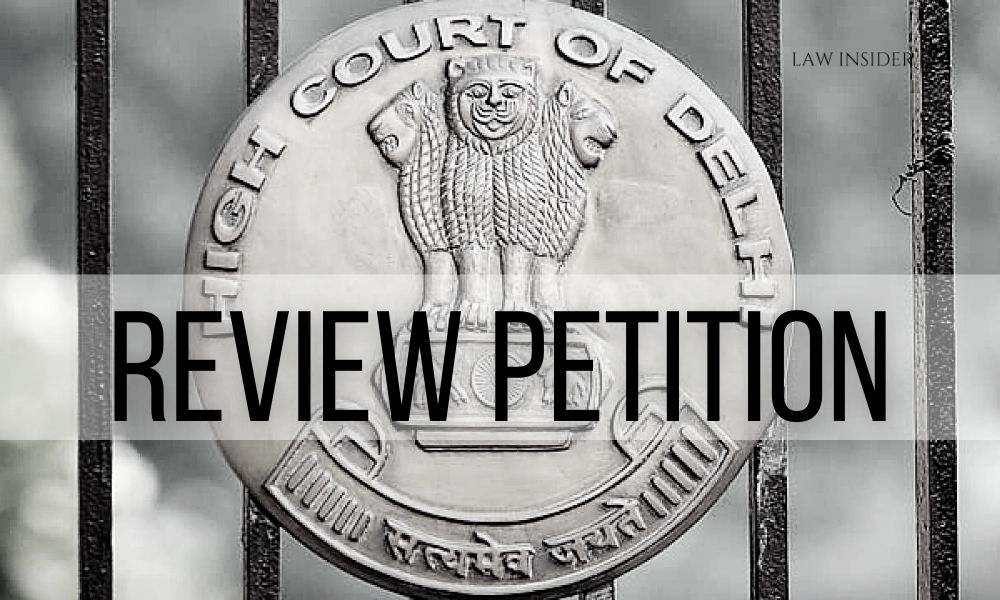By Surbhi Jain-
Introduction
In India, a binding decision of the Supreme Court or High Court can be reviewed in Review Petition. The parties aggrieved on any order of the Supreme Court or High Court on any apparent error can file a review petition. Taking into consideration the principle of stare decisis, courts generally do not unsettle a decision, without a strong case. This provision regarding review is an exception to the legal principle of stare decisis.
In a legal sense filing of application before the Hon’ble court to re-examine the material of facts and verification of records relating to pronounced judgment is called as review petition. It is legally given another chance to the aggrieved parties to file review petition before the court to rectify order on an error apparent on the face of the record.
Meaning
Review means when the court re-examines the decisions made by itself, the examination of any legislation made by the government or any act of the administrative organizations; it rectifies the error in an act, judgment, or legislation. According to many leading legal philosophers and luminaries, the main purpose of this law is to protect the rights of the people as the judgments made by the courts, not mostly, but at times are fallible. In the process of review, the court might either overturn the decision or make necessary changes in it. The constitution of India has provided us with enough provisions of review to make the principles of justice more efficient.
Article 226 of the Indian Constitution, on the lines of Article 32, vests powers like issuing writs and giving directions in the High Court. According to this article, a person whose fundamental rights have been violated can approach the High Court. The High Court can issue a direction to any government, person or organization. The High Court acts as a protector of the fundamental right and gives the ground for judicial review.
Article 227 of the Indian Constitution gives the power of supremacy to the High Courts of India over other courts or tribunals within its jurisdiction (i.e. the courts that lie in its territory). The High Court can issue directions to the subordinate courts under this article and the courts are bound by it. The High Court enjoys the power of revision under articles 226 and 227 of the Constitution of India.

Powers of the High Court
Article 226 clause (1) empowers the High Courts in the States or Union Territories to issue to any person or authority including any Government within their territories, directions, orders or writs for the enforcement of the fundamental rights or for any other purpose. The power of judicial review of the High Court under Article 226 is wider than that of the Supreme Court under Article 32 of the Constitution.
The expression ‘for any other purpose enables the High Court to exercise their power of judicial review for the enforcement of ordinary legal rights which are not fundamental rights. High Court can issue a writ to a person or authority not only when it is within the territorial jurisdiction of the court but also when it is outside its jurisdiction provided the cause of action wholly or partly arises within its territorial jurisdiction.
This power of the High Court under Article 226 is concurrent with the power of the Supreme Court under Article 32 of the Constitution. Article 227 clause (1) confers the power of ‘superintendence over all courts and tribunals throughout the territories in relation to which it exercises jurisdiction. However, this power does not extend, like Article 136, over any court or tribunal constituted under any law relating to the Armed Forces.
This power is in addition to the power conferred upon the High Court under Article 226 which is of a judicial nature. Is this power of superintendence, administrative or judicial? Under the Government of India Act, 1935 this power extended only to the courts and was of administrative nature only. Under the Constitution it is extended to the tribunals and section 224 clause (2) of the Government of India Act, 1935, which made it of administrative nature, was not retained in Article 227.
Therefore, the power of superintendence under Article 227 is of an administrative as well as judicial nature. The parameters of this power are well settled, and it is exercised on the same grounds as the power of judicial review.
They are as follows:
- It can be exercised even in those cases where no appeal or revision lies to the High Court;
- The power should not ordinarily be exercised if any other remedy is available even if it involved inconvenience or delay.
- The power is available where there is want or excess of jurisdiction, failure to exercise jurisdiction violation of principles of natural justice and error of law apparent on the face of the record;
- In the exercise of this power the High Court does not act as appellate tribunal.
- It does not invest the High Court with an unlimited prerogative to interfere in cases where wrong decisions have been arrived at by judicial or quasi-judicial tribunals on questions of law or fact. There has to be grave miscarriage of justice or flagrant violation of law calling for interference. Tribunal under Article 227 has the same meaning as under Article 136 for the Supreme Court. In Surya Dev Rai v. Ram Chander Rai[1], the Supreme Court held that the purpose underlying vesting of this jurisdiction under Article 227 is-paving the path of justice and removing its obstacles therein” Thus a very wide discretionary power is provided to the High Court’s under articles 226 and 227. However, it must be exercised according to the principles of judicial review.
Review is one of the most important parts to ensure justice and this principle is almost present in every democratic country. Review enables an individual to ensure that his right is not violated by any act, any law made by the government or by an error of any court. Review truly holds together the concept of complete justice and separation of power and this function acts as the backbone of the democracy.
If there had not been a system of review in the judicial process, then the law made by the government would not be subject to the examination or review by the court and the entire judicial process would become futile. The principle of judicial review ensures the principle of complete justice. The Supreme Court and the High Court have used this principle while delivering landmark verdicts like in the case of Vishaka v. State of Rajasthan[2], where the Supreme Court laid down the famous Vishaka guidelines.
Article 137 subject to the provision of any law made by parliament or any rules made under article 145, the Supreme Court shall have power to review any judgement pronounced or order made by it.
In case of Shivdeo Singh vs State of Punjab[3], which directly covers this issue and holds that a High Court has the power to review its order passed in writs Petition under Article 226 of the Constitution.
Under the review petition, the binding judgments of the Supreme Court/High Court can be reviewed. Generally, in view of stare decisis (the legal principle of determining points in litigation according to precedent), courts do not disturb a ruling without a solid case.
This review provision is thus an exemption from the legal stare decisis principle. Article 137 of the Constitution provides for the authority of the Supreme Court of India to revise any judgment it pronounced (or orders made) pursuant to Article 145 of the Constitution.
The concept of review is one of the important aspects in maintaining human rights, as the fundamental rights like the right to life, right to speech and expression and right to practice any religion are enforceable because of the process of judicial review.
The contravention of these rights by the government or by any other legal person can be challenged in the court only by the process of judicial review. So, this makes it an indivisible part of the judicial process.
The concept also helps in maintaining the limits of the organization of a state, like courts or government organizations, and checking that there is no outreach of power by the organizations.
Grounds for review
Review can be filed, if there is:
- discovery of New and Important matter or evidence, which, after the exercise of due diligence was not within the knowledge of the person seeking review or could not be produced by him at any time when the decree was passed or order made; or
- some mistake or error apparent on the face of the record; or
- any other sufficient reason.
Time limit and manner of filing
A review application or petition may be filed by the affected party within 30 days of the Order passed by the High Court or Supreme Court. The decisions of both Supreme Court and High Courts can be reviewed in Review Petition. Article 137 of the Constitution provides that subject to provisions of any law and rule made under Article 145 the Supreme Court of India has the power to review any judgment pronounced (or order made) by it.
Conclusion
The High Court with the powers to ensure that the subordinate courts ‘proceedings are conducted within the boundaries of their jurisdiction and in the furtherance of justice in accordance with the law. It allows the High Court to rectify, errors of jurisdiction committed by subordinate courts and provides the means to obtain rectification of a non-appealable order to an aggrieved party. In other words, revisional jurisdiction is conferred on the High Court for the effective exercise of its supervisory and visitorial powers.
- Surya Dev Rai v. Ram Chander Rai 2003 6 SCC 673 ↑
- Vishaka v. State of Rajasthan (1997) 6 SCC 241 ↑
- Shivdeo Singh vs State of Punjab 1963 AIR SC 1909 ↑

